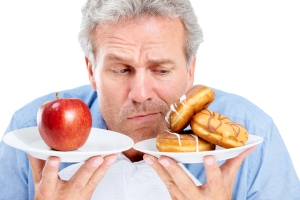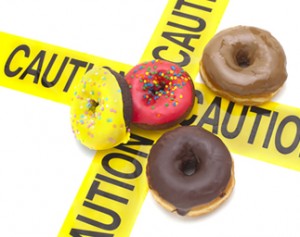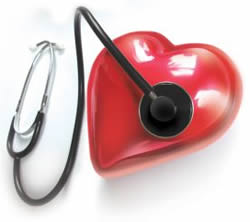By Leanne Thompson
 Have you ever wondered how does your body utilize the food that you eat? Think about it. When you eat bacon and pancakes for breakfast, where do they go? Of course, in the comfort of your tummy—safe and sound! Where would they be if not in your acid-filled stomach, right? Yikes! Now, that doesn’t sound too comfortable!
Have you ever wondered how does your body utilize the food that you eat? Think about it. When you eat bacon and pancakes for breakfast, where do they go? Of course, in the comfort of your tummy—safe and sound! Where would they be if not in your acid-filled stomach, right? Yikes! Now, that doesn’t sound too comfortable!
Your stomach is filled with concentrated hydrochloric acid, a strong acid that helps break down the food that you eat. It’s so strong that if you were to drop a piece of wood, it would eat right through it. That’s right! Your favorite donut cannot retain its perfect round shape inside your tummy, not even that carrot you patiently julienned. You do know that your stomach is not really picky when it comes to food, right? Unless, of course, when you are allergic to a certain food item and you cannot tolerate it.
It turns out you don’t really have to think too hard when deciding what food to eat. Eat that hamburger, pizza, and salad all at once and just let them fight it out inside! They will all get mixed up anyway. After all, your stomach is not some kind of celebrity chef to judge the food you’re presenting to it based on its appearance. All it does is its job, to digest. But, do you ever wonder how your body “views” the food that you eat, or how does your stomach protects itself from auto-digestion (stomach digesting itself)? I’m sure you’ve heard of carbohydrates, protein, and fats and how important it is for us to get enough of them from our diet for optimum health. But, what are they? Is it true that carbs make you fat? How about calories? They are the ones that make it hard for someone to fit into her skinny jeans, right?
If you have ever wondered about those things, then read on. We’ll give you all the information you need to understand what a crispy chicken wing or a banana does to keep your body up and running.
The Fate of Food
When you chew food, you are breaking it into little pieces that are easier to swallow. These pieces travel down your esophagus, which is like a pipe, to your stomach and get mixed into “liquid mush”. Think of this liquid mush as the result of acid-bathing in your stomach (you knew it was going to happen!), a necessary process in order to pass through the small intestine. In your small intestine, the mush is then broken down into even smaller pieces, so tiny that they can’t be seen with the human eyes. These are called the nutrients. They go into your blood and travel to other places in your body where they are needed. Food components that cannot be digested by your body pass the large intestine for excretion (if you know what I mean).
Nutrients
Think of the foods you have eaten today or the ones that you are about to eat. Maybe you had a glass of milk and two slices of toasted whole wheat bread with peanut butter and banana slices for breakfast. Now, you are thinking whether you’ll have fried chicken and garlic rice for lunch or stick to your usual chicken salad—because salad is always a good choice, says your health-conscious friend. If only it’s socially acceptable to bathe your salad with gravy! Of course, you can always do that in private. But as the saying goes, ‘what you eat in private, you wear in public’. Ah, priorities! Priorities!
If eating is too much of a hassle then why do we have to do it anyway? Let me take that back, eating is not a hassle at all. In fact, it’s sort of rewarding and comforting. Think of those times when there’s nothing a tub of ice cream can’t solve or that time you were pretty sure your life sucks only to realize ‘hey, at least I can still eat more than three times a day’. The things that you must consider in order to ensure that you’re eating with the “health benefits” in mind are what leave some people frazzled. Why can’t we just eat bacon all day? Ah, that’s right! Because what nutrients can we get from doing that?
We’ve all heard it, eat a variety of foods to ensure that you are getting all the “nutrients” needed to properly nourish your body. But, what are nutrients and how are they different from carbohydrates, protein, and fats? Or, do they differ at all?
 According to the British Nutrition Foundation, nutrients provide energy and are essential for the growth and maintenance of the body. Carbohydrates, protein, and fats do not differ from nutrients. In fact, they are all nutrients. Nutrients can be broken down into two types, the macronutrients and the micronutrients. The macronutrients include carbohydrates, protein, and fats. “Macro” means big. Macronutrients are the nutrients you need to get in relative large amounts in your diet as they provide your body with energy and building blocks for growth and maintenance. Pretty much everything you eat contains varying amounts of these nutrients. If we were to study the anatomy of a hamburger, you can think of the bun as the carbohydrate, the burger patty as your protein source, and the oil used to fry the patty as fat. Of course, it’s not as simple as that. One can argue that fat can also come from the burger patty itself, even without getting fried. Sure, but it did give you a picture of how to classify food whether it’s carbs, protein, or fat, right?
According to the British Nutrition Foundation, nutrients provide energy and are essential for the growth and maintenance of the body. Carbohydrates, protein, and fats do not differ from nutrients. In fact, they are all nutrients. Nutrients can be broken down into two types, the macronutrients and the micronutrients. The macronutrients include carbohydrates, protein, and fats. “Macro” means big. Macronutrients are the nutrients you need to get in relative large amounts in your diet as they provide your body with energy and building blocks for growth and maintenance. Pretty much everything you eat contains varying amounts of these nutrients. If we were to study the anatomy of a hamburger, you can think of the bun as the carbohydrate, the burger patty as your protein source, and the oil used to fry the patty as fat. Of course, it’s not as simple as that. One can argue that fat can also come from the burger patty itself, even without getting fried. Sure, but it did give you a picture of how to classify food whether it’s carbs, protein, or fat, right?
Next stop: micronutrients. If macronutrients are the big guys, then you bet micronutrients are the smaller ones! “Micro” means small, so micronutrients are the kind of nutrients you need in small amounts and these includes the dietary supplement superstars, vitamins and minerals. Vitamins are categorized whether they can dissolve in fat (fat-soluble) or water (water-soluble). Minerals are divided in 2 groups, the major minerals and the trace minerals (needed in small amounts). These nutrients are needed by your body to grow and develop normally. Take vitamin D for example. It “strengthens” your bones because it helps your body absorb calcium efficiently, since your body cannot produce calcium.
Calories
In case you’re wondering which among these nutrients is responsible for your muffin top—which you’re not quite sure whether you hate or not, it’s the macronutrients. They are the nutrients that provide your body calories or energy.
While calories often get a bad rap when it comes to weight management—people constantly counting and cutting them, they aren’t necessarily bad. Actually, a calorie is a unit of energy. Knowing how many calories a certain food item has gives you an idea of how much energy your body could get from eating or drinking it. If calories give you energy then why are people so anxious in keeping them counted? Isn’t that a good thing? Sure, it is! But, we all know for a fact that too much of a good thing can be bad for you, too. Calories, whether from carbohydrate, protein, or fat, when consumed in excess are stored as body fat—and nobody wants fat. Well, excess body fat.
Some fad diets require reducing your intake of any of the macronutrients. However, all of them are crucial for your health.
Carbohydrates
“Skip the carbs! It’ll make you fat!” just like calories, carbohydrates get its fair share of bashing from hopeful dieters. Carbohydrate is the preferred energy source of the human body. Your body needs carbohydrates like a car engine needs gasoline. According to the Nutrition Source of Harvard School of Public Health, the type of carbohydrate you chose to eat is more important than its amount in your diet.
 There are two types of carbohydrates in food: simple and complex. Simple carbohydrates tend to give a sudden burst of energy followed by a slump. They are found in processed foods and anything with refined sugar. On the other hand, complex carbohydrates are broken down slowly providing a steady release of energy which helps in keeping you feeling full, longer. When you eat any type of carbohydrate, it will be broken down into simple sugars, such as glucose—the main form of fuel used by your body. If you choose to cut back on your carbohydrate consumption, your body will start to break down protein and fat to get the glucose it needs.
There are two types of carbohydrates in food: simple and complex. Simple carbohydrates tend to give a sudden burst of energy followed by a slump. They are found in processed foods and anything with refined sugar. On the other hand, complex carbohydrates are broken down slowly providing a steady release of energy which helps in keeping you feeling full, longer. When you eat any type of carbohydrate, it will be broken down into simple sugars, such as glucose—the main form of fuel used by your body. If you choose to cut back on your carbohydrate consumption, your body will start to break down protein and fat to get the glucose it needs.
You may be thinking, ‘isn’t it great that I’ll burn protein and fat for energy?’ however, it’s important for you to know that protein is needed by your body for its growth and repair. Using protein as an energy source means there will be little left to carry out these vital functions. The same goes for fat. If fat is used as energy source then its other functions will be affected.
Protein
You can find protein in your muscle, bone, skin, hair, and pretty much in every other part of your body. According to the Nutrition Source of Harvard School of Public Health, protein makes up the enzymes that are responsible for many chemical reactions in your body, including hemoglobin, carrying oxygen in your blood. Since macronutrients are “big” nutrients, they cannot enter the bloodstream without being broken down into their “smaller” forms. The digestive system breaks down protein into its building blocks, amino acids in order to enter the bloodstream.
Protein digestion begins in the mouth with chewing, making it easier to swallow. It continues in the stomach with the help of digestive juices (hydrochloric acid and pepsinogen) and muscles surrounding the stomach, squeezing and squishing the food and the stomach fluids together. Hydrochloric acid converts pepsinogen into pepsin, which then helps break down the bonds between the amino acids.
In order to protect the small intestine (where the next step of protein digestion will occur) from the harsh hydrochloric acid, your pancreas will release bicarbonates to neutralize the effects of the said acid. It will also release an enzyme called trypsin, which helps further break down amino acids so that they can be absorbed into the bloodstream. Some amino acids are essential—you need to get them from food because your body cannot make them, while others are nonessential.
Some protein sources include meats, poultry, fish, cheese, legumes, milk, and nuts. Protein that comes from animal sources contains all the essential amino acids that your body needs. Plant source of protein, on the other hand, do not.
Dietary Fat
Ah, the “fat” everyone’s dreading about! But, what counts as fat? Have you heard about the “healthy fats” in avocado? They say it’s the kind of fat you definitely don’t want to avoid. Then, is it really true that some fats are better than others?
Fat is essential for our survival. We need it for normal growth and development, absorption of fat-soluble vitamins (vitamins A, D, E, and K), cushioning for the organs, and maintaining cell membranes. It also provides taste, consistency, and stability to foods. When fat enters your digestive system, it meets with an enzyme called lipase. Lipase breaks fat into its parts, glycerol and fatty acids, which are then reassembled into triglycerides for transport in the bloodstream. Once in the bloodstream, triglycerides are absorbed by muscle cells and fat (adipose) cells to store them or to burn them to fuel your everyday activities.
 There are 3 main types of fat, unsaturated fat, saturated fat, and trans fat. According to the Centers for Disease Control and Prevention (CDC), diets high in saturated fat have been linked to coronary heart disease and other chronic diseases. Saturated fat can be found in foods like butter, lard, and meat. Another type of fat, trans fat is often used by food manufacturers to increase the food’s shelf life, stability, and texture. Consumption of trans fat decreases the high-density lipoprotein (HDL, or “good) cholesterol and increases low-density lipoprotein (LDL, or “bad”) cholesterol. It is commonly found in baked goods, fried foods, and margarines. Replacing saturated and trans fat in your diet with unsaturated fat (found in foods like avocados, canola oil, and olive oil) have been shown to decrease the risk of developing cardiovascular diseases.
There are 3 main types of fat, unsaturated fat, saturated fat, and trans fat. According to the Centers for Disease Control and Prevention (CDC), diets high in saturated fat have been linked to coronary heart disease and other chronic diseases. Saturated fat can be found in foods like butter, lard, and meat. Another type of fat, trans fat is often used by food manufacturers to increase the food’s shelf life, stability, and texture. Consumption of trans fat decreases the high-density lipoprotein (HDL, or “good) cholesterol and increases low-density lipoprotein (LDL, or “bad”) cholesterol. It is commonly found in baked goods, fried foods, and margarines. Replacing saturated and trans fat in your diet with unsaturated fat (found in foods like avocados, canola oil, and olive oil) have been shown to decrease the risk of developing cardiovascular diseases.
Resources
What are nutrients (British Nutrition Foundation) – http://www.nutrition.org.uk/healthyliving/basics/what-are-nutrients
Understanding Carbohydrates (Harvard) – http://www.hsph.harvard.edu/nutritionsource/carbohydrates/
Understanding Protein (Harvard) – http://www.hsph.harvard.edu/nutritionsource/what-should-you-eat/protein/
Fat (CDC) – http://www.cdc.gov/nutrition/everyone/basics/fat/index.html
Saturated fat (CDC) – http://www.cdc.gov/nutrition/everyone/basics/fat/saturatedfat.html
– Leanne Thompson is a writer and a blogger who has contributed to some of the most well-known Health, Fitness and Nutrition blogs. She has struggled with her weight in her teenage years, which has driven her to undertake a Bachelors of Nutrition degree in the renowned Iowa State University, mostly to study the needs of a human body and how to make the most out of her life. She has made it her life goal to spread awareness about the importance of healthy weight loss and the wellbeing of people she has contact with. Find out more on her health blog or connect with her on Google+ / Twitter.
